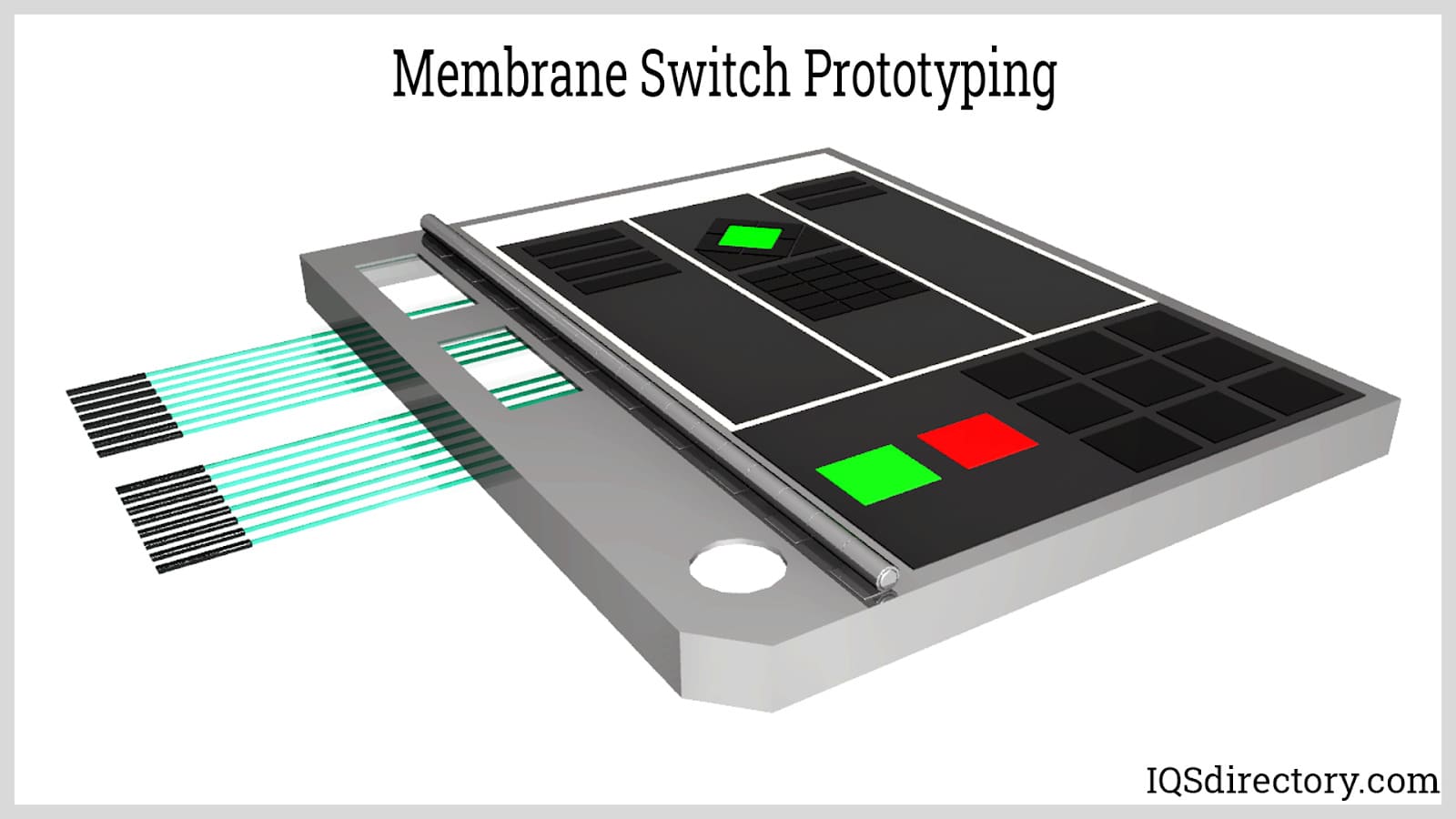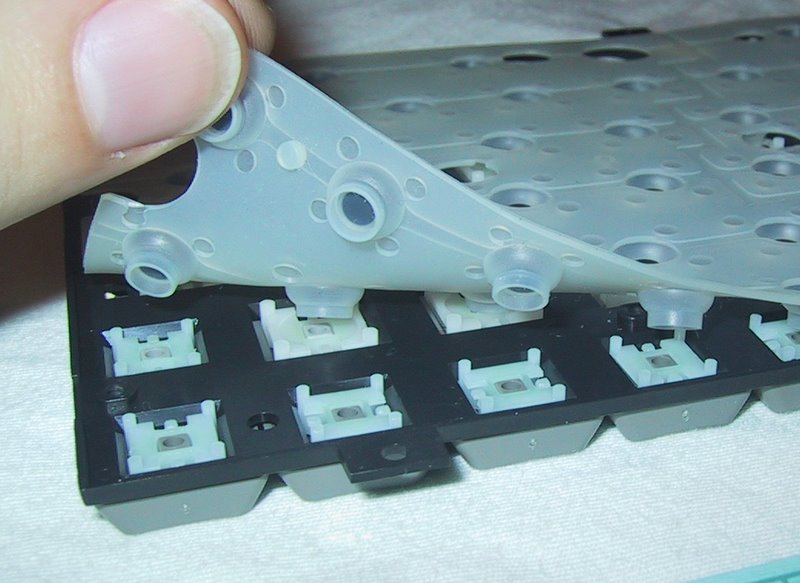The Major Benefits of Using Membrane Switches in Industrial Applications
The Major Benefits of Using Membrane Switches in Industrial Applications
Blog Article
Membrane Layer Switch Innovation: The Key to Reliable and Cost-Effective User Interfaces
Membrane layer switch modern technology has actually become a pivotal element in the design of interface, giving both reliability and cost-effectiveness across a varied series of applications. Its robust building makes certain resistance to environmental challenges, while the flexibility in style allows for customized options that satisfy details market demands. As we check out the complex benefits of membrane switches, their potential for advancement raises questions regarding future applications and advancing trends. What does the next phase hold for this modern technology in an increasingly digital landscape?
Understanding Membrane Switch Modern Technology
Membrane button modern technology is an extensively made use of user interface remedy in numerous electronic gadgets, supplying a seamless blend of performance and style. This innovation integrates several layers of products, typically containing a graphic overlay, spacer layer, and a circuit layer. The graphic overlay presents the user interface components, while the spacer layer divides the circuit layer from the overlay up until an individual activates a switch.
When stress is related to the overlay, the circuit layer finishes the electrical circuit, sending out a signal to the tool. This system enables for various configurations, consisting of responsive comments and backlighting options, boosting customer interaction. Membrane buttons are typically made making use of long lasting materials such as polyester or polycarbonate, ensuring long life and resistance to environmental factors like moisture and dirt.
The adaptability of membrane switches over allows their application in diverse markets, including clinical gadgets, consumer electronic devices, and industrial controls. Their portable design enables for assimilation into space-constrained atmospheres, supplying a reliable customer interface without endangering visual charm. Understanding the intricacies of membrane button innovation is important for suppliers and developers seeking to develop dependable and reliable human-machine interfaces.
Trick Benefits of Membrane Layer Buttons
While various user interface solutions exist, membrane switches over offer distinctive benefits that make them a preferred option in various applications. Among the key benefits is their durability; membrane switches are made to endure rough environmental conditions, including wetness, dirt, and temperature changes, making certain long-lasting performance. This durability considerably minimizes the demand for frequent replacements, consequently decreasing overall upkeep costs.

Furthermore, membrane layer buttons are lightweight and compact, making them appropriate for applications where space is restricted. Their low-profile design adds to a sleek look without endangering performance.
Cost-effectiveness is additionally a significant benefit, as the manufacturing process for membrane layer switches over has a tendency to be less costly compared to traditional mechanical switches. This price, incorporated with their dependability and simplicity of installation, settings why not check here membrane layer changes as a useful solution for a variety of sectors looking for efficient and reliable interface.
Applications Across Numerous Industries
Exactly how do membrane switches adjust to the varied requirements of various markets? Membrane layer switch innovation is significantly acknowledged for its versatility, making it appropriate for a vast range of applications across numerous sectors.
In consumer electronic devices, membrane layer buttons supply a compact service for remotes and home devices, improving customer experience through user-friendly style. In addition, the industrial market leverages membrane switches for machinery control panels, gaining from their resistance to extreme atmospheres, such as dampness and dust.
Military and aerospace applications likewise use membrane layer switches for their dependability and capacity to endure extreme conditions, making sure functional performance in vital situations. Moreover, the food and drink market embraces these buttons for automated systems, where cleanliness and simplicity of procedure are paramount. Eventually, membrane switches are customized to satisfy the special demands of each industry, proving their essential duty in modern-day innovation interfaces
Style and Customization Options

In the world of membrane layer button innovation, style and personalization options play a crucial duty in boosting performance and individual interaction. These buttons can be tailored to fulfill certain operational requirements and visual preferences, making them functional elements in various applications.
Among the primary modification alternatives is the More Info design of the switch itself, which can be made to accommodate one-of-a-kind interface and ergonomic considerations. By changing the form, dimension, and arrangement of switches, manufacturers can develop intuitive layouts that facilitate convenience of usage. Furthermore, the incorporation of various shades and graphic overlays enables branding and improved presence, guaranteeing that users can promptly determine features.
Furthermore, membrane layer buttons can be engineered with numerous responsive comments systems, such as elevated buttons or audible clicks, to boost the individual experience. Different materials can likewise be picked for sturdiness and ecological resistance, addressing aspects such as dampness, temperature changes, and chemical direct exposure.
Eventually, the considerable design and customization choices readily available in membrane switch technology equip organizations to create customized services that not only meet practical needs but likewise line up with their branding and functional demands.

Future Fads in Membrane Switches
As membrane layer button modern technology remains to progress, future patterns are significantly concentrated on enhancing user experience and integrating innovative capabilities. One considerable trend is the integration of touch-sensitive and capacitive technologies into conventional membrane switches. This advancement enables even more user-friendly interface, supplying responsive responses while keeping a smooth style.
One more emerging trend is the use of eco-friendly products, driven by the expanding need for lasting manufacturing methods. Producers are looking for to reduce their carbon footprint by utilizing recyclable substrates and low-impact inks, aligning with international sustainability objectives.
In addition, the rise of the Internet of Points (IoT) is motivating the consolidation of smart functions into membrane buttons. Boosted connection choices will allow tools to communicate with each other, permitting for seamless integration right into wider systems.
Furthermore, improvements in printing innovations, such as digital Discover More printing, are enabling higher design adaptability and personalization. This enables suppliers to produce intricate layouts and dynamic shades cost-effectively.

Final Thought
To conclude, membrane button innovation represents an important development in user interface layout, providing substantial advantages in durability, modification, and cost-effectiveness. Its widespread applicability throughout diverse industries highlights its importance in modern technology. As innovations remain to arise, particularly in touch-sensitive user interfaces and lasting materials, the possibility for membrane changes to improve user experience and performance stays encouraging. Continued exploration of this modern technology will likely generate even more renovations and expand its extent in future applications.
Report this page